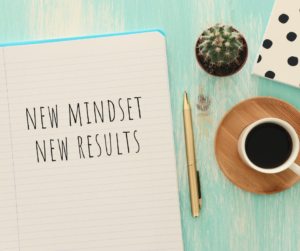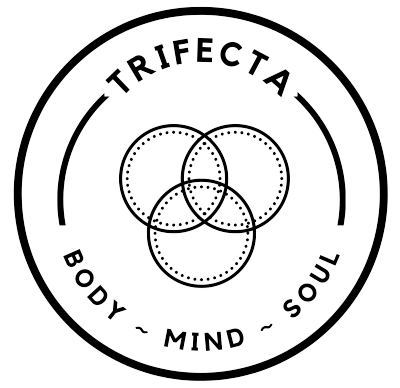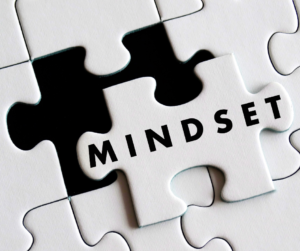Sampson his Delilah…
Caesar his Brutus…
Jesus his Judas…
Superman his kryptonite…
Tom his Jerry…
Road Runner his coyote…
And we have our attitude…
Viktor Frankly reminds us in Man’s Search for Meaning: Everything can be taken from a man but one thing: the last of the human freedoms—to choose one’s attitude in any given set of circumstances, to choose one’s own way.
As a therapist, it is quite common to hear the following:
- “I’ve already tried that, and it didn’t work.”
- “I am too old to change.”
- “I am stubborn like my dad/mom.”
- “You know how we Germans are…(Yes, I am aware!)
- “I am scared to try to new things.”
- “What if I fail?”
- “What if I am embarrassed?”
- “What if I make a mistake?”
- “You can’t teach an old dogs new tricks.”
- “I’m not changing until my spouse changes.”
- “I don’t feel like doing it.”
What do all these statements have in common? They are limiting and self-defeating beliefs that lead one to develop a fixed mind set. Reinforced over time, they become ingrained and difficult to overcome. We become too comfortable with avoiding anything that might look like failure. In other words, we have a bad attitude.
What Do We Mean by Attitude?
According to social psychology, an enduring and general evaluation or cognitive schema relating to an object, person, group, issue, or concept. Strength and valence can vary, thus, an attitude can be negative or positive. This can also refer to any subjective belief or evaluation associated with an object. N., Sam M.S., “ATTITUDE,” in PsychologyDictionary.org, April 7, 2013, https://psychologydictionary.org/attitude/ (accessed January 22, 2022).
Which brings me to my subject of developing a growth mindset. It is an attitude. It is a concept. It is a belief. It is essential to our growth as we age.
What is a Growth Mindset?
To understand a growth mindset, you and I need to know Carol Dweck’s research on student’s attitudes about failure.
After studying the behavior of thousands of children, she coined the terms fixed mindset and growth mindset to help describe the beliefs people have about learning. See Carol Dweck’s talk at Stanford here: https://bit.ly/3rFMd4o
Simply stated, a growth mindset is a belief that our abilities can be improved, developed, and grow through hard work and dedication. Beyond any notion of fiction or magical thinking, without any effort and exertion on our part we will remain stuck without advancing to a level of higher achievement.
In other words, if you believe your mind can be developed through effort plus input from others, i.e., are you open to influence and teachability, then you would have a growth mindset.
The difference really comes down to how we think we appear to others and energy distribution. If you and I are interested in growth and improvement, we are more than likely open to being wrong and having our beliefs challenged. We will put more energy into learning rather than leaning on my innate talents and giftedness to keep us in the game. Dallas Willard’s dictum for the disciplines of the spiritual life is appropriate: “Don’t try, train.”
A Pure Growth Mindset Doesn’t Exist
Attaining a growth mindset takes dedication. It is not achieved overnight or with a life hack. All of us have fixed mindsets. You and I cling to our cognitive biases and defensive postures. We are not that open to criticism and challenges especially if we have any insecurities.
Our odds of developing a growth mindset does increase when we are open to sharing information, conversing with others, opening ourselves to collaboration and compromise, admitting when we are wrong, and seeking open and honest feedback from individuals who want the best for us and we want the best for them.
The Brain is More Adaptable Than You Think
Advances in neuroscience confirm the brain’s ability to be adaptable. It’s called Neuroplasticity. Neuroplasticity, or the capacity for our brain cells to change in response to our behavior, can help us more thoughtfully engage in activities that will contribute to our well-being–no matter our age. If you want to read more, click the following link: http://bitly.ws/o3uz
With practice, neural networks will grow new connections which will increase the speed of new information. We can increase our growth by the actions we take in life. I referenced mood follows movement in a previous blog. You can click here to read more about motivation http://bitly.ws/o3uP
Taking growth-minded actions really do pay off in the end. Growth strategies such as asking questions, practicing, training, fitness, good nutrition, and improved sleep hygiene over time will stack the odds in our favor.
Stretching ourselves as well as building resilience and stick-to-itiveness, especially when things are difficult, allows us to thrive and flourish during some of the most trying times of our lives.
The apostle James writes in his epistle: Consider it a sheer gift, friends, when tests and challenges come at you from all sides. You know that under pressure, your faith-life is forced into the open and shows its true colors. So don’t try to get out of anything prematurely. Let it do its work so you become mature and well-developed, not deficient in any way (1:2-4 The Message).
Growth Mindset and Self-Efficacy
Albert Bandura defined self-efficacy as a belief in our ability to succeed in various and diverse circumstances. In other words, how we handled and strived during the situation mattered in the end. Our self-efficacy was built upon past experiences with success especially if we were challenged to grow and we overcame the obstacle with grit and resolve.
Without these experiences, our self-efficacy could be easily dismantled at the slightest struggle, and we experience setbacks at a much higher rate. It is important for you and me to struggle well at times, to work through the frustration, and come out on the other side stronger and more resilient.
The Stoic Emperor Marcus Aurelius reminds us in Meditations, Book 5.20: The mind adapts and converts to its own purposes the obstacle to our acting. The impediment to action advances action. What stands in the way becomes the way.
In keeping with the spirit of the Stoics, a large part of developing a growth mindset is not letting disappointments or frustrations be your undoing. They can actually provide a way forward. Essayist and journalist Florence King writes: Little triumphs are the pennies of self-esteem.
Get Comfortable with Being Uncomfortable
If you want to start developing a growth mindset, learn to advocate and assert yourself into any situation you find yourself where something isn’t working well for you. Yes, speak up! Chances are someone else is thinking the same thing you are, and if no one else is, it doesn’t’ matter because you are growing.
Remember, you are working on developing a growth mindset and being more invested in learning and improving is more important than depending on external validation and approval. Or the dreaded, over-inflated fear of “looking stupid” or “being wrong.”
To quote psychologist Roy Bennett: “The comfort zone is a psychological state in which one feels familiar, safe, at ease, and secure. If you always do what is easy and choose the path of least resistance, you never step outside your comfort zone. Great things don’t come from comfort zones.”
Yet, not impossible, as long as we are willing to take one small step toward our preferred future embracing mistakes as the best teachers encouraging us to take in and digest new information. It is a process requiring collaboration and commitment, grace and compassion, discomfort and irritation, and a shift from thinking “I am not good at this” (fixed mindset) to “I am not good at this yet” (growth mindset).
Here are Five Growth Mindset Practices to Get You Started 
- Recognize you can improve. Remember neuroplasticity. Our brains are built to learn. When we learn and implement new ideas or skills, we create a healthy feedback loop fueled by the pleasure of dopamine. What a reward!
- Challenge yourself with new activities and experiences. Learn a new skill or take up a new hobby. Remember to be patient with yourself as you learn. Don’t be afraid to reach out and ask someone to help you as you learn. We all have blind spots. Working with a coach, therapist, or mentor is a valuable resource to help guide and direct.
- Flip the internal script. Learning how to reframe our thoughts is powerful. This is more than the power of positive thinking, it is simply learning the power of words and the insidious damage they can carry. For example, saying “I’m stupid,” opens up a whole world of thoughts and feelings that are likely from your earlier experiences. Saying, “This new activity is challenging me, but I am taking one step at time to learn” is more realistic and gentle, less binary and restrictive. It opens the door of opportunity wider for your growth plan.
- Be open to evaluation and feedback. We want to be lifelong learners. It helps with stagnation and leads more to life and wellbeing. Share what you are thinking with others in a group. It doesn’t have to be formal. Write an article, share a post, ask someone you trust to be your eyes and ears. Learn from other’s experiences and embrace developing a more open mind.
- Trust the process. Developing this mindset is more than white-knuckling effort. It’s ongoing attention to push us out of our comfort zone into a more confident zone. Setbacks are not failures as much as a way to step back and see things differently. It is our opportunity to become more comfortable with being uncomfortable. In all, we want to have more joy in the journey of learning and discovery.
We are all a mixture of fixed and growth mindsets.
I think a fixed mindset will lead us to embrace perfectionistic thinking over time. Whereas a growth mindset with lead us to embrace progress over time as the marker for success.
As I have tried to embrace more of a growth mindset, the dialogue goes something like this:
“I am trying new things that are difficult and challenge me. I am not there yet, but I am learning a lot about my self in the process. I know this will take some time and commitment on my part, and I am open to the experience because I choose movement over inaction. I will not compare myself to others because comparisons create envy and distractions. I will do this at my pace, and I will celebrate my small victories because they are mine. I have earned them. In the end, I will not achieve perfection. It is impossible to attain and does not have a good return on the investment. In fact, I won’t even start if that is my aim. What I will do is embrace the process and the opportunities to enable myself to try new things, to learn, to have fun, and give myself grace and gentleness as I venture into territories unknown. I can do this for me.”



Follow Us